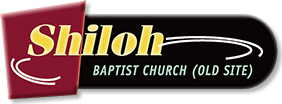
ON THE RIVER AT 801 SOPHIA STREET IN DOWNTOWN FREDERICKSBURG, VIRGINIA
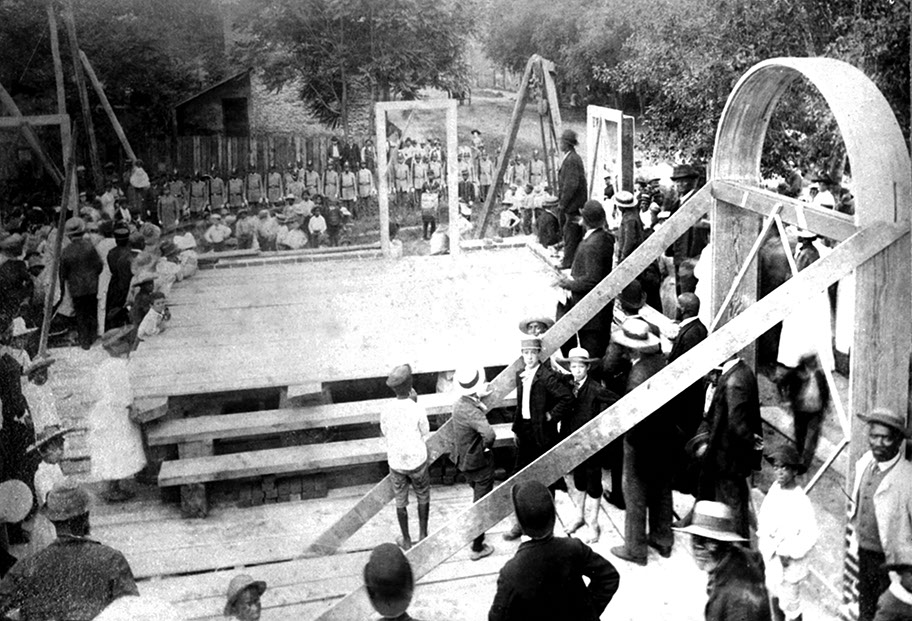
Photograph
Celebration marking the laying of a new cornerstone for our building, June 1890
Voices from a Cloud of Witnesses
These first-person narratives were presented by costumed members of the congregation during worship services on April 10, 2016, the day we celebrated our building's inclusion on the National Register of Historic Places. Each "voice" seeks to reflect the authentic experiences of the individual whose voice it is.
Web content copyright © 2015 by Shiloh Baptist Church (Old Site), 801 Sophia Street, Fredericksburg, Virginia 22401
Note: Numbers in brackets, such as [1], refer to numbered source notes that can be found at the bottom of this page.
«« »»
Also note: Officially, this page is still somewhat "under construction." As of late November 2014, additional source notes and some photographs were still being added.
Pastor Armistead Walker
What a blessing to see you all, right here on the banks of the Rappahannock, right here where folks like us have gathered for so long — to worship and to serve, to weep and to plan, to sing and to dream, and to be united in so many important causes.
You probably don’t remember me. My name is Armistead Walker. I was born back in 1797. Even as a young man in this church, I felt a divine calling. I felt a divine Spirit blowing through me. By the late 1830s, I had become this congregation’s primary black preacher, for right here, in this place we call “Shiloh,” I had met a divine Master far superior to the human “master” who said he owned me.
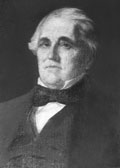 George Rowe, an ardent opponent of abolition, served as our legally required pastor/overseer for the last 5 years before the Civil War I’m told that I was one of the first persons of color ordained to the Christian ministry in Virginia. Originally, this church had both black and white members. Although white folks were in the minority, they ran the church. They made all of us people of color enter by a back door and sit up in the gallery. Finally, in 1854, the white folks left to form their own separate church. I stayed on, where I had always been, as this congregation’s first pastor of color.
George Rowe, an ardent opponent of abolition, served as our legally required pastor/overseer for the last 5 years before the Civil War I’m told that I was one of the first persons of color ordained to the Christian ministry in Virginia. Originally, this church had both black and white members. Although white folks were in the minority, they ran the church. They made all of us people of color enter by a back door and sit up in the gallery. Finally, in 1854, the white folks left to form their own separate church. I stayed on, where I had always been, as this congregation’s first pastor of color.
I couldn’t serve alone. Because of oppressive state laws, I had to have a white overseer, a co-pastor named George Rowe. I was still enslaved, and he was very vocal in his support of slavery. As you can imagine, serving with him wasn’t always easy. But I did my best. I preached my sermons. I hugged my weeping sisters and brothers. I 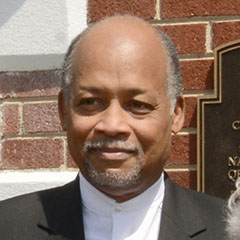 Junior deacon Roland Moore played the part of Arnistead Walker in our special "Cloud of Witnesses" history presentationstirred hope into the struggling. Deep inside, I think we all felt the winds of God’s Spirit blowing.
Junior deacon Roland Moore played the part of Arnistead Walker in our special "Cloud of Witnesses" history presentationstirred hope into the struggling. Deep inside, I think we all felt the winds of God’s Spirit blowing.
In early 1860, the same year in which Abraham Lincoln was running for president, the same year in which white Southerners were up in arms about what had happened at Harper’s Ferry, sickness took hold of me.
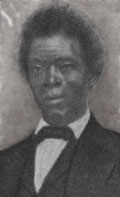 Noah Davis, ordained at Shiloh in the 1840s My funeral was held right here, where you’re sitting this morning. Almost a thousand colored folks showed up, plus a few hundred whites. Everybody couldn’t get in. Many had to stand outside.
Noah Davis, ordained at Shiloh in the 1840s My funeral was held right here, where you’re sitting this morning. Almost a thousand colored folks showed up, plus a few hundred whites. Everybody couldn’t get in. Many had to stand outside.
Noah Davis preached my funeral. Back in the 1840s, brother Noah had been a fellow preacher with me here at Shiloh. Eventually he managed to buy his freedom and taught himself to read and write. By the late 1850s, he was pastoring up in Baltimore. What a honor to have him come back and deliver my funeral sermon!
After the funeral, my body was carried to the colored burying ground, just outside the city limits, not far from where Maury stadium now stands.
When they laid me to rest, it wasn’t yet clear where the country was headed. It wasn’t yet clear where Fredericksburg was headed. But I left knowing that the same Spirit that had caused Jesus to preach “liberty to the captives” was moving in human hearts. And I knew, beyond a shadow of a doubt, it would also keep moving here at Shiloh.
Church member John Washington
I am John Washington. Though I am light in color, I was born a slave in 1838. My mother, who had learned to read and write, started teaching me to spell at four years old. I could read by the age of ten.
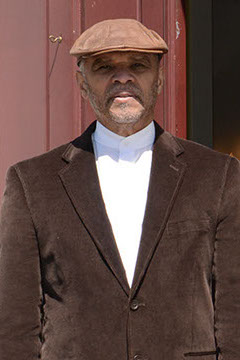 Junior trustee Navonia Nelson played the part of John Washington in our special history presentationI was kept at the house of the “Old Mistress” as a servant boy. I ran errands and waited on the table. On Sundays, I came to church here on Sophia Street. Even though I had to sit in the gallery with the other slaves, I also had to sit where the “Old Mistress” could see me.
Junior trustee Navonia Nelson played the part of John Washington in our special history presentationI was kept at the house of the “Old Mistress” as a servant boy. I ran errands and waited on the table. On Sundays, I came to church here on Sophia Street. Even though I had to sit in the gallery with the other slaves, I also had to sit where the “Old Mistress” could see me.
At twelve years of age, I was left alone in Fredericksburg. My mother and siblings were shipped off to Staunton, Virginia. I really wanted to to learn to write so I could exchange letters with my mother. I missed her terribly.
Eventually, at church I met Annie Gordon. We were married here at Shiloh in January 1862 by George Rowe, the white overseer, and I began work at a hotel tavern a block up Hanover street.
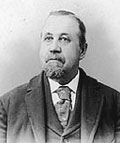 John Washington as he appeared in later years On April 18, 1862, Union troops reached Falmouth. Confusion raged in the city. The owners of the hotel decided they were leaving town. They gave me the keys to put in a safe place, plus money to pay all the servants. I realized this was my chance. I headed north along the river road and joined the Union camp. It was Good Friday, my first night of freedom.
John Washington as he appeared in later years On April 18, 1862, Union troops reached Falmouth. Confusion raged in the city. The owners of the hotel decided they were leaving town. They gave me the keys to put in a safe place, plus money to pay all the servants. I realized this was my chance. I headed north along the river road and joined the Union camp. It was Good Friday, my first night of freedom.
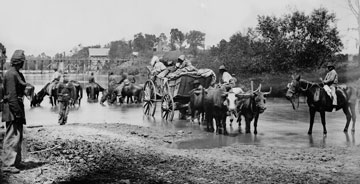 At least 400 of Shiloh's members fled from enslavement by making their way across the Rappahannock River while Union troops were encamped nearby, including many in August 1862,
At least 400 of Shiloh's members fled from enslavement by making their way across the Rappahannock River while Union troops were encamped nearby, including many in August 1862,
the month when this photo was taken Five months later, when she had a chance to flee, my wife joined me in Washington, D.C. Annie and I, along with about four hundred members from Shiloh in Fredericksburg, began to gather in a “little shanty” on L Street between Sixteenth and Seventeenth streets. We called ourselves “Shiloh,” and by 1863, we were recognized as an official church. It wasn’t long before we had grown to eight hundred members. I served as church clerk and vice president of the Baptist Sunday School Union. In 1883, we built a two-story brick building for ourselves. Unfortunately, later in that decade, some problems developed. Annie and I left with other dissatisfied members, joining Nineteenth Street Baptist Church instead.
At age 34, I decided to write my own narrative of the Civil War. My story, including my life here in Fredericksburg, is still in print.
Pastor George Dixon
“He took my feet out of the miry clay and planted them upon a rock…”
My name is George Lewis Dixon. I was born a slave in 1821 on the Thornton Plantation in Caroline County. As a young man, I served as a dray man and waited tables in Fredericksburg. I bought my freedom in 1856, and served as a guide for General McDowell during the Civil War.
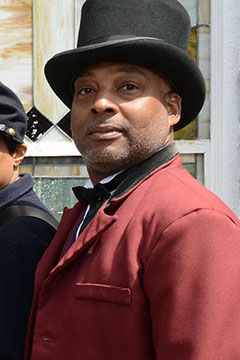 The Rev. Jarvis Bailey, who grew up at Shiloh Old Site, played the part of George Dixon in our special history presentationWhen that war came to Fredericksburg in 1862, God opened a highway across the Rappahannock. Thousands of us fled to Washington.
The Rev. Jarvis Bailey, who grew up at Shiloh Old Site, played the part of George Dixon in our special history presentationWhen that war came to Fredericksburg in 1862, God opened a highway across the Rappahannock. Thousands of us fled to Washington.
I had served as a preaching deacon here in Fredericksburg. Feeling called to the ministry, I pursued an education in Washington and was ordained there at the Nineteenth Street Baptist Church.
In 1866, I returned to the Shiloh I had known before the war. Although I was greeted with the stench of horse manure, splintered pews, and shattered windows, I strode victoriously into the severely damaged but spiritually indestructible building and became Shiloh’s pastor. I gathered together the flock, and together we began to renovate our old building. We revived and embraced our cultural dignity. And together we began to strive toward economic empowerment.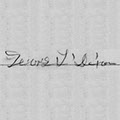 Unfortunately, although we have George L. Dixon's signature on an old marriage certificate, we lack any photograph of him Anyone with a photograph or other information about Rev. Geroge L. Dixon is asked to contact the Shiloh Old Site archives committee by clicking here
Unfortunately, although we have George L. Dixon's signature on an old marriage certificate, we lack any photograph of him Anyone with a photograph or other information about Rev. Geroge L. Dixon is asked to contact the Shiloh Old Site archives committee by clicking here
Using my God-given gifts of bold, electrifying oratory; organizational energy; political, social, and fraternal activism; and spiritual leadership, Shiloh Baptist Church soon became a hub of educational, religious, and civic activity. In spite of ongoing institutional racism, we had influence, and we made a difference in the lives of many.
I dreamed no small dreams. In 1876, I enlisted six courageous brothers. Together, we ran on an all-black slate for open seats on city council. Though we lost, we sent a message that couldn’t be ignored.
I pastored this magnificent “rock of ages” with distinction until 1878. Remaining in the area, I pastored New Ark and Caledonia Baptist churches in the counties. The Rev. Lemuel Walden, a Shaw University graduate, succeeded me here at Shiloh. Pastoring for three years, he notably helped establish the Shiloh Cemetery, where I, too, would later be buried.
In 1881, a very energetic minister, the Rev. Willis Robinson, assumed the pastorate. Our building, heavily damaged during the war and repeatedly assaulted by floods, needed extensive repairs. Aware that money would be needed to stabilize the structure, Rev. Robinson developed an innovative fund-raising plan, but he was rebuffed in these efforts by his deacons. The delay proved disastrous. In 1886, the rear wall collapsed. The whole building had to be demolished.
It was a sad day, a sad day for us all.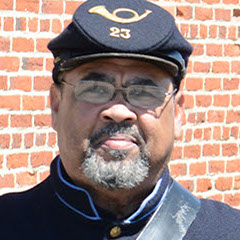 Junior trustee Irvin Sugg played the part of a member of the 23rd Regiment of the U.S. Colored Troops, a group that played a role in Shiloh Old Site's history
Junior trustee Irvin Sugg played the part of a member of the 23rd Regiment of the U.S. Colored Troops, a group that played a role in Shiloh Old Site's history
A member of the U.S. Colored Troops
I am a member of the U.S. Colored Troops. I served with the Union Army during the Civil War. After that conflict ended, I returned to Fredericksburg. Some of us former soldiers continued getting together to support needed activities.
As you can imagine, among us as well as in the broader community, news about the collapse of the back wall at Shiloh spread quickly. We were distraught. Many of us wept when we saw the ruin of our place of worship.
A committee from the church asked city authorities for permission to use the courthouse as a temporary place of worship. For about a year, that’s where we met every Sunday. We knew we needed to rebuild. A committee was appointed to come up with a plan. The committee recommended a new site on Princess Anne Street, and on behalf of the church, the trustees purchased what was then known as “the Revere Shop.” Serious questions soon arose about legal title to the property. Many of us began saying, “Let’s stay. Let’s rebuild on the old site.” Others were convinced we should rebuild on higher ground, farther from the river.
Before long, Shiloh was a house divided: husband against wife, father against son, brother against brother. Some members began meeting with Rev. Robinson at the Revere Shop, while others of us continued meeting at the courthouse, with a Rev. Jones preaching for us on an interim basis.
In the weeks that followed, those us still meeting at the courthouse discovered that fallen bricks from the old site were being quietly moved for re-use at the Revere site. Well, we put a stop to that! In June 1887, a temporary injunction was issued prohibiting any new construction on the Revere site. Shortly thereafter, Rev. James E. Brown became pastor of our group, which was still meeting at the courthouse.
We had a problem. Both of our groups thought of ourselves as the true Shiloh. Both of us wanted to keep the name exclusively for ourselves. Finally, in November 1888, a local judge issued a decree. He ordered a compromise. 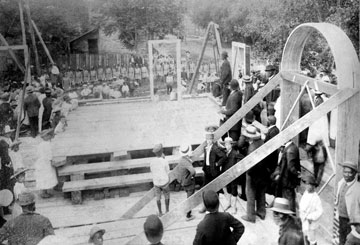 A festive outdoor service of worship and thanksgiving
A festive outdoor service of worship and thanksgiving
was held in June 1890 to mark the laying of a cornerstone for construction of our current sanctuary, and if you look closely, you will see members of the 23rd Regiment of the U.S. Coloread Troops lined in their dress uniforms at the back of the photo The church’s assets would be divided. Each group would use the name “Shiloh Baptist Church,” with the addition of either “Old Site” or “New Site.” Peace was restored. By July 1889, we had resolved all conflicts, and what had been one congregation was now two.
Our new pastor, Rev. James E. Brown, a compassionate and conscientious preacher, achieved his goals. Those of us remaining at the old site were invigorated and spiritually rejuvenated as never before.
On June 18, 1890, Rev. Brown oversaw the laying of the cornerstone for the sanctuary in which you are now gathered. I was there, along with other members of the U.S. Colored Troops. We served as a kind of “honor guard” for the grand celebration. Many from the community were present as well.
In October, later that year, when this building was finally ready for use, we were blessed to have Rev. George Dixon return. The pastor who led us so ably after the Civil War preached again that afternoon. He preached in this very sanctuary. It was a Homecoming that many of us will never forget.
Deaconess Julia Frazier%20grey.jpg?crc=3790525184) Julia Frazier on February 1, 1925
Julia Frazier on February 1, 1925
Julia Sprow Ross Frazier is my name. I was born a slave on the Boggs Plantation in Spotsylvania County in 1854, the same year Shiloh became an independent organization. I was one of sixteen children born to Luvenia and Charles Sprow. Among my fondest memories as a child is attending an Easter service here at Shiloh with my mother.
Following Emancipation, my family moved to Fredericksburg. We attended church whenever we could. Shortly after Rev. James E. Brown began serving as our pastor, and after we had moved into the newly reconstructed building in which you sit today, we had more than two hundred children in regular attendance at Sunday school.
Rev. Brown also set in motion a committee that led to the establishment of the Fredericksburg Normal and Industrial Institute, the only school in the area that provided the equivalent of a high school education for children of 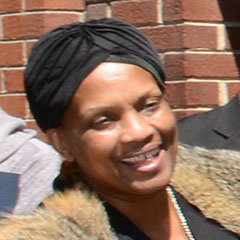 Pam Johnson played Julia Frazier during our "Clouds of Wintesses" history presentation color. The pastor who we sometimes called “the Moses of our people” brought us together in marvelous ways. He guided us for eighteen wonderful years.
Pam Johnson played Julia Frazier during our "Clouds of Wintesses" history presentation color. The pastor who we sometimes called “the Moses of our people” brought us together in marvelous ways. He guided us for eighteen wonderful years.
In 1905, John Allen Brown succeeded him. He led us in adding a central bell tower. We’d ring the bell, which is still up there, to call folks to services.
But then, what a blessing it was to have Rev. John Diamond arrive as our next pastor on November 18, 1910. He was a dynamic preacher whose style varied from the simple to the spectacular. In addition to his pastoral pursuits, he worked as an architect and skilled builder. He added on to the river side of our building, oversaw the building of a parsonage on Amelia Street, and had stained glass windows installed in our sanctuary. He also taught part-time at the Fredericksburg Normal and Industrial Institute.
We had almost six hundred on the membership roll in those days. Almost everyone was involved in one endeavor or another.
Rev. B. H. Hester was installed as our pastor in 1922. He was a gifted writer and educator. In 1923, he instituted a night school for adults, here at the church. It was a way of teaching reading and writing to those of us who had not yet had a chance to learn.
Throughout all these pastorates, I remained a very active member of Shiloh Old Site. I served on the deaconess board, and in 1921, the year that Rev. Hester was selected, I started the Pastor’s Aid Club and served as its first president. It was changed from Pastor’s Aid to Church Aid at Rev. Hester’s request.
In my capacity as the club’s president, I planted the seed to have a pipe organ installed in the sanctuary. In 1923, I rolled up my sleeves and began raising funds to obtain the $4,000 instrument. By the grace of God, the organ was unveiled in May 1925 and completely paid for in May 1927. It was a thing of beauty that graced our services.
I worked with Rev. Hester on many other projects as well before closing my eyes forever in January 1939, just two weeks after the death of my husband.
Pastor B. H. Hester
I am Rev. B. H. Hester. I was selected in 1921 as the pastor of Shiloh Old Site and formally installed in January 1922. I also served for some years as principal, teacher, and coach at the Fredericksburg Normal and Industrial 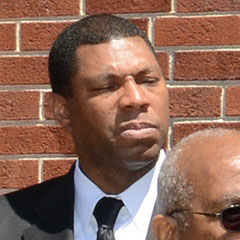 Junior deacon John Russell played pastor B.H. Hester in our special "Clouds of Witnesses" presentation Institute. The school’s support was raised in part by individuals and groups at Shiloh Old Site, along with other churches and groups in our city.
Junior deacon John Russell played pastor B.H. Hester in our special "Clouds of Witnesses" presentation Institute. The school’s support was raised in part by individuals and groups at Shiloh Old Site, along with other churches and groups in our city.
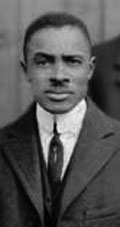 B. H. Hester, shown here in 1925, served as our pastor for 40 years, during which time he was a visionary and often outspoken and successful champion of racial, economic, and political justice in keeping with his passionate understanding of Christ and Christ's ways In 1923, to help combat the high rate of illiteracy in “our” community, we instituted a Night School here at the church for adults who wanted to increase their skills or to overcome their own inability to read. Enrollment ran as high as three hundred. Our student ages ranged from sixteen to seventy-five.
B. H. Hester, shown here in 1925, served as our pastor for 40 years, during which time he was a visionary and often outspoken and successful champion of racial, economic, and political justice in keeping with his passionate understanding of Christ and Christ's ways In 1923, to help combat the high rate of illiteracy in “our” community, we instituted a Night School here at the church for adults who wanted to increase their skills or to overcome their own inability to read. Enrollment ran as high as three hundred. Our student ages ranged from sixteen to seventy-five.
I remember saying about the school, “You are never too old to attend. Can you read the Constitution? Do you wish to qualify to vote? If so, come out and join us. We have taught people to read and write in just six months, and we continue to do the same.”
In 1925, I initiated a newsletter called the Shiloh Herald. Although it was published by Shiloh Old Site, it provided a wide range of local news for the black community. The articles were about “us” — the happenings in our community. My editorials in the Shiloh Herald pulled no punches. I attacked unjust decisions by the Supreme Court and criticized influential white 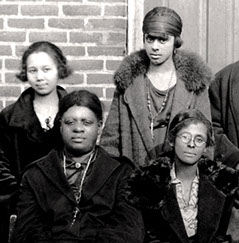 Four members of the Shiloh Herald staff shortly after the paper got going in 1925newspapers in the state of Virginia. I even won the day when I convinced a major Richmond newspaper to stop using its derogatory and un-Christian language toward blacks.
Four members of the Shiloh Herald staff shortly after the paper got going in 1925newspapers in the state of Virginia. I even won the day when I convinced a major Richmond newspaper to stop using its derogatory and un-Christian language toward blacks.
Although relationships were strained with the city’s white Baptist church, during my pastorate Old Site enjoyed mutually supportive relationships with the city’s Presbyterian and Episcopalian congregations. The pastors of these two churches supported many of our endeavors.
In 1927, I researched, wrote, and published a history of Shiloh Baptist Church (Old Site), a history that is still useful to this congregation’s Archives Committee.
In October 1942, after several days of heavy rain, the Rappahannock began to rise and flooded the first floor of our building, causing extensive damage. What a mess that was!
Throughout my tenure as pastor, we played a strong role in working to see that as many local African Americans as possible were qualified to vote in local, state, and national elections. Despite the financial hardships 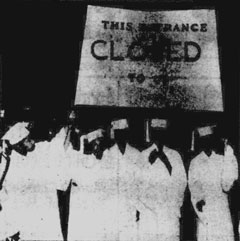 Members of Shiloh Old Site played key roles in planning and implementing a 1950 march protesting a decision by the city that denied black high school graduates and their families the right to enter the city's publicly funded community center through the front door involved, our church actively promoted the paying of the capitation — aka “poll” — tax that was necessary for African Americans to participate in elections.
Members of Shiloh Old Site played key roles in planning and implementing a 1950 march protesting a decision by the city that denied black high school graduates and their families the right to enter the city's publicly funded community center through the front door involved, our church actively promoted the paying of the capitation — aka “poll” — tax that was necessary for African Americans to participate in elections.
All of us faced many trials and issues of discrimination. I railed against the way that we as a people were treated.
In 1950, the graduating class of the Walker-Grant High School asked for and received — after some prodding — permission to use the Fredericksburg Community Center for its graduation. But upon arriving, they were told that they would have to enter through the back door. No way would they do that. Our own Grace Sprow was a member of that class.
With pride, our children then staged a peaceful protest and marched in caps and gowns through the streets of Fredericksburg, eventually arriving at Shiloh Old Site. We opened our doors to them, and they held their graduation in this grand building.
A key member of the church at this time was Dr. Philip Wyatt, a soft-spoken but strong-willed dentist whose vision and determination was instrumental in much that happened in the years that followed. But for that story, you need to hear from Dr. Wyatt himself.
Dentist Philip Wyatt
My name is Phillip Y. Wyatt, Sr. I was born in Charlottesville. I came to Fredericksburg in 1933 to start a dental practice. I soon joined Shiloh Old Site, serving as the church clerk, a presiding deacon, a financial officer, and a church 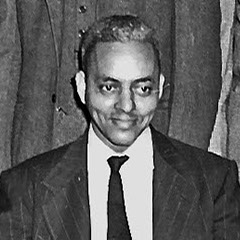 Soft-spoken by strong-willed, deacon Philip Y. Wyatt was a local and statewide civil rights leader school teacher. Later, when Rev. Hester’s health began to decline, I often served as the Sunday morning preacher.
Soft-spoken by strong-willed, deacon Philip Y. Wyatt was a local and statewide civil rights leader school teacher. Later, when Rev. Hester’s health began to decline, I often served as the Sunday morning preacher.
But I wasn’t just a Christian on Sunday. In the 1940s, as an outspoken advocate for racial justice, I became secretary of the local branch of the National Association for the Advancement of Colored People (NAACP). I took over as president of the Fredericksburg chapter in 1953 — and held that office for twenty years.
I used my position to prick the conscience of the community. I made sure issues were addressed — and then worked behind the scenes as an organizer, mediator, and negotiator. 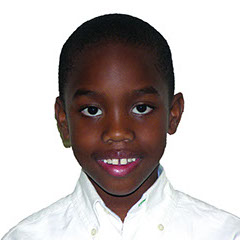 Bryce Webb, pictured here in 2007, is now a tall, slender high school student, and he was perfect for playing Philip Wyatt in our special "Clouds of Witnesses" presentation Because of my skills, I was ultimately elected as president of the statewide NAACP and proudly served in that position from 1957 to 1960.
Bryce Webb, pictured here in 2007, is now a tall, slender high school student, and he was perfect for playing Philip Wyatt in our special "Clouds of Witnesses" presentation Because of my skills, I was ultimately elected as president of the statewide NAACP and proudly served in that position from 1957 to 1960.
I was also co-chairman of the Fredericksburg Biracial Commission and a member of the Virginia State Advisory Committee to the U. S. Commission on Civil Rights. At my urging, Shiloh Old Site took a special offering in 1956 to support the bus boycott in Montgomery, Alabama, and in an effort to achieve greater electoral justice, in the 1950s, I invited the Virginia Voters League to hold its monthly meetings at Shiloh Old Site.
In April 1960, I called a mass meeting here in Fredericksburg. I wanted to build support for the courageous members of our race who were striving elsewhere for true democracy through sit-in movements.
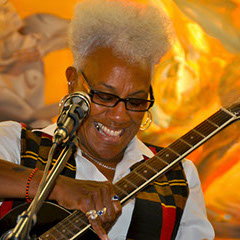 Member Gaye Adegbalola was on hand during the presentation as a living witness to the kinds of things she did in the past and the kinds of things she continues to speak and work for At the time, Fredericksburg’s lunch counters were for whites only. Mamie Scott and Gladys Todd, both members of Shiloh Old Site, joined me in training about twenty local high school students for a sit-in effort, which began July 1, 1960, and continued throughout the month. We used this building to plan and stage each day’s activities, targeting especially three downtown businesses: Woolworth’s, W. T. Grant’s, and People’s Drug Store.
Member Gaye Adegbalola was on hand during the presentation as a living witness to the kinds of things she did in the past and the kinds of things she continues to speak and work for At the time, Fredericksburg’s lunch counters were for whites only. Mamie Scott and Gladys Todd, both members of Shiloh Old Site, joined me in training about twenty local high school students for a sit-in effort, which began July 1, 1960, and continued throughout the month. We used this building to plan and stage each day’s activities, targeting especially three downtown businesses: Woolworth’s, W. T. Grant’s, and People’s Drug Store.
Our own Gaye Todd Adegbalola participated in those sit-ins.
After a month of protests, Woolworth’s and W. T. Grant announced a change of policy. I immediately led a group of seven African Americans to the two stores to test the change. We were served. A few weeks later, Gaye Adegbalola and Kenneth Wyatt called on the local manager of Pitts movie theaters to gain the privilege of sitting in any seat rather than those that had been designated for African Americans. He informed them that as of that moment, all special seating was abolished.
Before long, Rev. Hester, still battling a crippling illness, decided to retire.
A young and energetic new pastor would soon be on the scene. It’s time for him to tell you his story.
Pastor Lawrence A. Lawrence Davies
As you heard earlier, it was on Good Friday 1862 that Union troops began gathering in Falmouth. While they laid plans for an invasion of Fredericksburg, thousands of enslaved Blacks and so-called “free people of color,” including about four hundred from this church, began to move north. Sometimes on foot, sometimes in wagons, they fled toward what they hoped would be the greater freedom of Washington, D.C.
Their new location indeed offered new opportunities, but they couldn’t forget their God — or the church in Fredericksburg that had nurtured their faith. As the Civil War raged, twenty-one faithful servants of God from Fredericksburg established a Shiloh Baptist Church in Washington, a vibrant congregation that endures to this day.
Whether it was irony or destiny, I can’t say, but one hundred years later, I, Lawrence A. Davies, made a return journey from Washington to Fredericksburg.
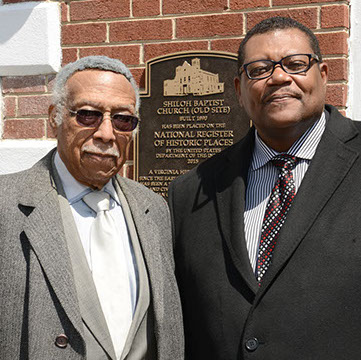 Pastor emertus Lawrence Davies represented himself at the "Clouds of Witnesses" history presentation; he's pictured here (on the left) with current pastor Aaron Dobynes Don’t tell me God didn’t have a plan! I had been an associate minister at Shiloh Baptist in Washington. On March 4, 1962, one hundred years after that fateful Good Friday in 1862, I assumed the pastorate of Shiloh Baptist (Old Site), here in Fredericksburg. Although I now have emeritus status, I served in this sacred place for fifty years, retiring as pastor on March 4, 2012.
Pastor emertus Lawrence Davies represented himself at the "Clouds of Witnesses" history presentation; he's pictured here (on the left) with current pastor Aaron Dobynes Don’t tell me God didn’t have a plan! I had been an associate minister at Shiloh Baptist in Washington. On March 4, 1962, one hundred years after that fateful Good Friday in 1862, I assumed the pastorate of Shiloh Baptist (Old Site), here in Fredericksburg. Although I now have emeritus status, I served in this sacred place for fifty years, retiring as pastor on March 4, 2012.
Arriving in Fredericksburg, I faced a tremendous challenge. I had to fill the shoes of an extraordinary pastor, the Rev. Dr. B. H. Hester. His prolonged illness had left Shiloh’s sheep without a shepherd—and its pasture unattended. I had the rare opportunity to pick up the mantle of Rev. Hester’s remarkable ministry.
By God’s grace and with the support of a responsive congregation, a revived Shiloh Old Site began to flourish. A constitution was written and adopted. Innovative education classes were instituted, both Christian and secular. Yearly budgets and calendars of events were developed. A parsonage was built to house our family. Additional deacons were ordained and new deaconesses installed. Clubs and auxiliaries were added, and new genres of music enriched our worship. Several members dedicated their lives to spreading the gospel, were trained, ordained, and proceeded to become pastors or missionaries. I established the Home Mission Committee as a local outreach to the needy, which continues to have a major impact in our community.
Having achieved internal stability, with vibrant ministries and evidence of spiritual strength and growth, I encouraged Shiloh to spread her wings, to rise to higher levels of community and ecumenical involvement. I became active in the Bi-racial Commission, the Ministerial Association, the Fredericksburg Counseling Service, and the Mental Health Association.
.jpg?crc=3957149996) Pastor Lawrence Davies served as the city's mayor for 20 years, during which time he was able to accomplish much for the neediest citizens of FredericksburgIn 1972, when floods from Hurricane Agnes severely damaged the first floor and the kitchen, the entire lower level was rebuilt. In 1976, an educational annex was added. Shortly thereafter, the mortgage was burned. Later, property next door was purchased; new pews were added; the one hundredth anniversary of this building’s cornerstone laying was celebrated, the Historic Fredericksburg Foundation designated Shiloh as an historic building, and our pipe organ was fully overhauled.
Pastor Lawrence Davies served as the city's mayor for 20 years, during which time he was able to accomplish much for the neediest citizens of FredericksburgIn 1972, when floods from Hurricane Agnes severely damaged the first floor and the kitchen, the entire lower level was rebuilt. In 1976, an educational annex was added. Shortly thereafter, the mortgage was burned. Later, property next door was purchased; new pews were added; the one hundredth anniversary of this building’s cornerstone laying was celebrated, the Historic Fredericksburg Foundation designated Shiloh as an historic building, and our pipe organ was fully overhauled.
In 1966, I ran for and was elected to the City Council. Ten years later, exactly one hundred years after black candidates first ran unsuccessfully for seats on City Council, I became the city’s first African American mayor, serving for twenty years until I retired in 1996. Many social, economic, and cultural changes occurred during my tenure. I am most proud of my efforts to provide affordable housing for low-income families and for spearheading the FRED bus transportation system.
For one hundred and sixty-two years, through the faith and vision of its people, this congregation and its treasured edifice have played a pivotal role in the life of this historic area. We are a stronghold for God. I am proud, humbled, and blessed beyond measure to have contributed to Shiloh Old Site’s awesome history.
>> For a more complete historical narrative covering
Shiloh Old Site's history, click here
>> To view an album of photographs taken during
an outdoor celebration of Shiloh Old Site's inclusion
on the National Register of Historic Places, click here
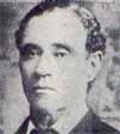
No photos have been found of Armistead Walker. This is his nephew, William Walker, who was a preaching deacon at Shiloh in Fredericksburg before the Civil War. During the war, he and others of those who had fled from Fredericksburg founded two congregations in Washington, D.C., one called Shiloh Baptist, the other called Zion Baptist.